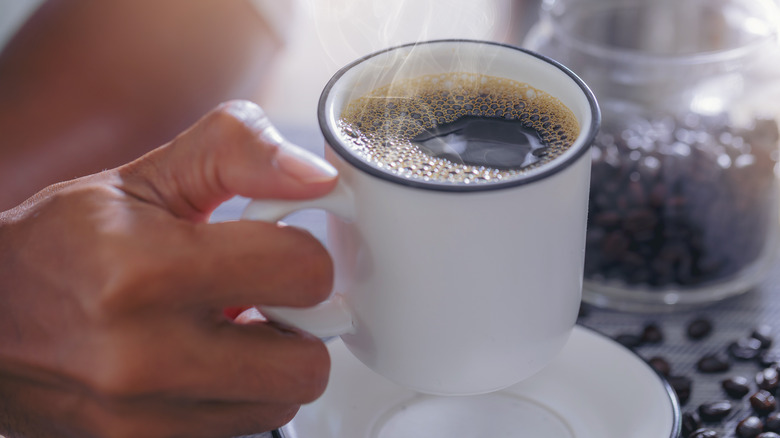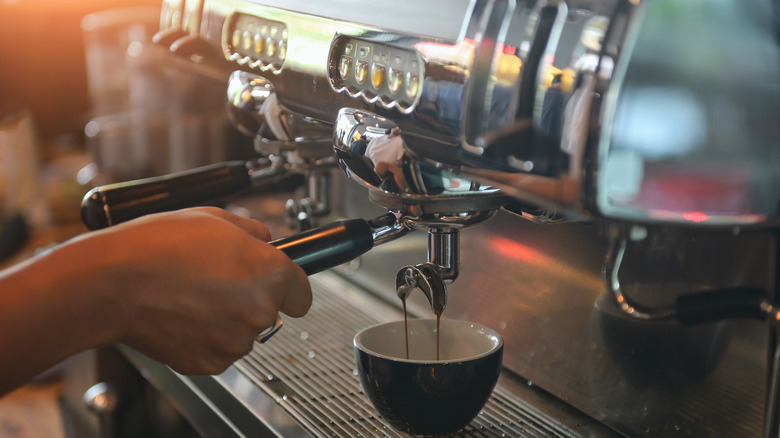How WWII Brought About The Invention Of The Americano
If you're a coffee lover, then it's a wide, wonderful world of caffeine for you out there. While many of us might be accustomed to a mug of black drip or perhaps a milky latte, there are tons of coffee variations out there, ranging from cappuccinos to espressos to frappés (via Barista Institute). And if you place your morning order at a java palace like Starbucks, the choices range even wider, from the famous pumpkin spice latte to the lauded caramel Frappuccino.
But many of us coffee lovers are just as entranced by the simple options as we are by the fancy, flavored syrup-spiked ones. For those whose caffeine preferences lean more straightforward, a favorite beverage is the Americano, which consists of a shot of concentrated espresso that's extended with the addition of hot water until it has the taste and consistency of a drip coffee (via Chamberlain Coffee). But did you know that, according to lore, this common drink wasn't created until the World War II era?
American soldiers found Italian coffee way too strong
Although the name "Americano" indicates something American, this coffee drink based on a shot of espresso (or two) that's then diluted with hot water has its origins in Italy. According to The New York Times, coffee is an important part of military history, consumed during the Civil War to keep weary soldiers' energy up and becoming more popular among the ranks during World War I. By the time of World War II, the paper reports, American soldiers were using 32.5 pounds of beans per person, per year, with the Army Quartermaster Corps satisfying soldiers' palates by roasting, grinding, and shipping its own beans overseas to Army men stationed abroad.
The paper relates the legend that during that war, American soldiers stationed in Italy — who perhaps needed more coffee than what was provided by Uncle Sam — encountered bold, concentrated Italian espresso, but, unaccustomed to its intensity, watered it down in order for it to resemble the weaker coffee they knew from home. The Americano was born, later becoming more prominently known during the 1990s with the wave of new specialty coffee shops that often served only espresso drinks. According to the book "Coffee: A Comprehensive Guide to the Bean, the Beverage, and the Industry" edited by Jonathan Morris, Robert W. Thurston, and Shawn Steiman, baristas would prepare Americanos for customers requesting ordinary black coffee, as that drink most closely approximated the taste.
According to Super Coffee, Americanos are commonly enjoyed today, either black or with milk or half and half — just like drip coffee, but with a richer, bolder, and more Italian flavor.

